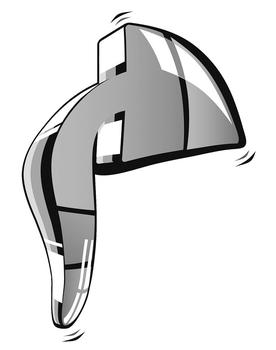 The PMI index shows that the growth momentum of the manufacturing industry has gradually recovered. In a forward-looking view, there is demand support for the expansion of manufacturing, and the short-term recovery of the economy can be sustained. However, in the absence of a sharp rebound in demand, the mill production phase will continue and the prices of industrial products will be repeated.
The PMI index shows that the growth momentum of the manufacturing industry has gradually recovered. In a forward-looking view, there is demand support for the expansion of manufacturing, and the short-term recovery of the economy can be sustained. However, in the absence of a sharp rebound in demand, the mill production phase will continue and the prices of industrial products will be repeated. In December, the initial value of HSBC China's manufacturing PMI was 50.9, hitting a 14-month high, indicating that the manufacturing industry rebounded in momentum. In particular, the new orders index hit a new high of 20 months. The recovery in the PMI index supported the recovery of demand and it is somewhat sustainable. However, there is still a problem of overcapacity. In the absence of a significant recovery in demand, the grinding production phase will continue and the market will continue to Slowly eliminating high-cost production capacity will be a long process.
In December, PMI rebounded 0.4% month-on-month, stronger than seasonal, and this feature has continued for four months. According to historical data, the HSBC PMI rose by an average of 0.1% MoM in December 2006-2011. In December, the PMI was above the blue line, hitting a 14-month high. The rebound was also stronger than seasonal, indicating that the momentum for the stable recovery of the manufacturing sector was strong.
From the sub-indicators, demand picked up and output slowed down. In December, the new orders index hit a new high of 20 months, pushing the PMI index back up and the demand to pick up faster and stronger than seasonal. In the period of 2006-2011, the new orders index was flat in December. Among them, the new export order index dropped slightly, indicating that domestic demand recovery is better than foreign demand. The rebound in the PMI index is based on the recovery of demand and its sustainability is strong.
The output growth slowed down. In December, the output index fell by 0.8 percentage points to 50.5%, which is still on the verge of death. This indicates that manufacturing production has maintained growth, but the growth rate has declined. In November, the prices of industrial products fell slightly on a chain basis, eliminating the high-cost production of some companies, which led to a decline in the output growth of enterprises. The one-and-one-half drop in the new order index and the output index put pressure on the purchase price, and the finished product price was supported. In December, the PMI finished product price index was basically flat, while the purchase price index fell slightly.
In the past three years, the company's investment in the production of large capacity has caused the current overcapacity problem to be serious. To dilute depreciation costs and financial costs, companies need to maintain a certain production scale. Once the price of industrial products rises, the output of the enterprise may increase rapidly, and the increase in supply will depress the prices of industrial products again. For example, the PPI in October turned positive, the HSBC PMI output index was higher than the new orders index in November, and the PPI fell again; When it fell, due to the high cost of marginal production of some companies, the supply growth rate dropped, supply and demand once again balanced, and product prices stabilized. For example, the new orders index rebounded in December, the output index fell, and the finished product prices were supported.
Therefore, at present, the economy is in a grinding production stage, and the prices of industrial products will be repeated. There will be no significant decline, nor will there be a trend of upward trend, and the possibility of a narrow oscillation will be even greater.
Electric Golf Buggy,Electric Buggy,Golf Buggy
Fenghua Jade Motor Co., Ltd. , http://www.golftrolley-manufacturer.com